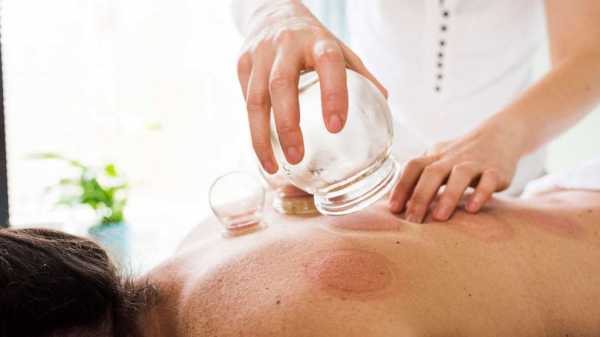
Cupping provides a “myofascial decompression,” loosening “the deep layer of Saran Wrap that encapsulates our muscles,” ABC Chief Medical Correspondent Dr. Jennifer Ashton said on “Good Morning America.” The suction in the cup pulls skin and underlying tissue upwards, and blood flow to the area is increased.
Is it safe?
Side effects of cupping are mainly skin related, according to the NIH. “Cupping leaves temporary bruises on the skin. Cupping can cause skin discoloration, scars, burns, and infections. It may worsen eczema or psoriasis.” There is a risk involved with “wet” cupping, where blood pools into the cup. If equipment is not sterilized appropriately, there is an increased risk of transmitting diseases like Hepatitis B and C.
Is it effective?
The medical science behind cupping is unclear. “In western, peer-reviewed medicine, there is scant to no literature to support whether or not this works,” Ashton explained, adding that “there have been some reports that people feel better. You just have to proceed with caution.”
There are some short-term studies showing that for neck pain, cupping is more effective than standard medical care with painkillers and heating pads. There are poorer quality studies that show for lower back pain, cupping is more effective than painkillers.
Sourse: abcnews.go.com






